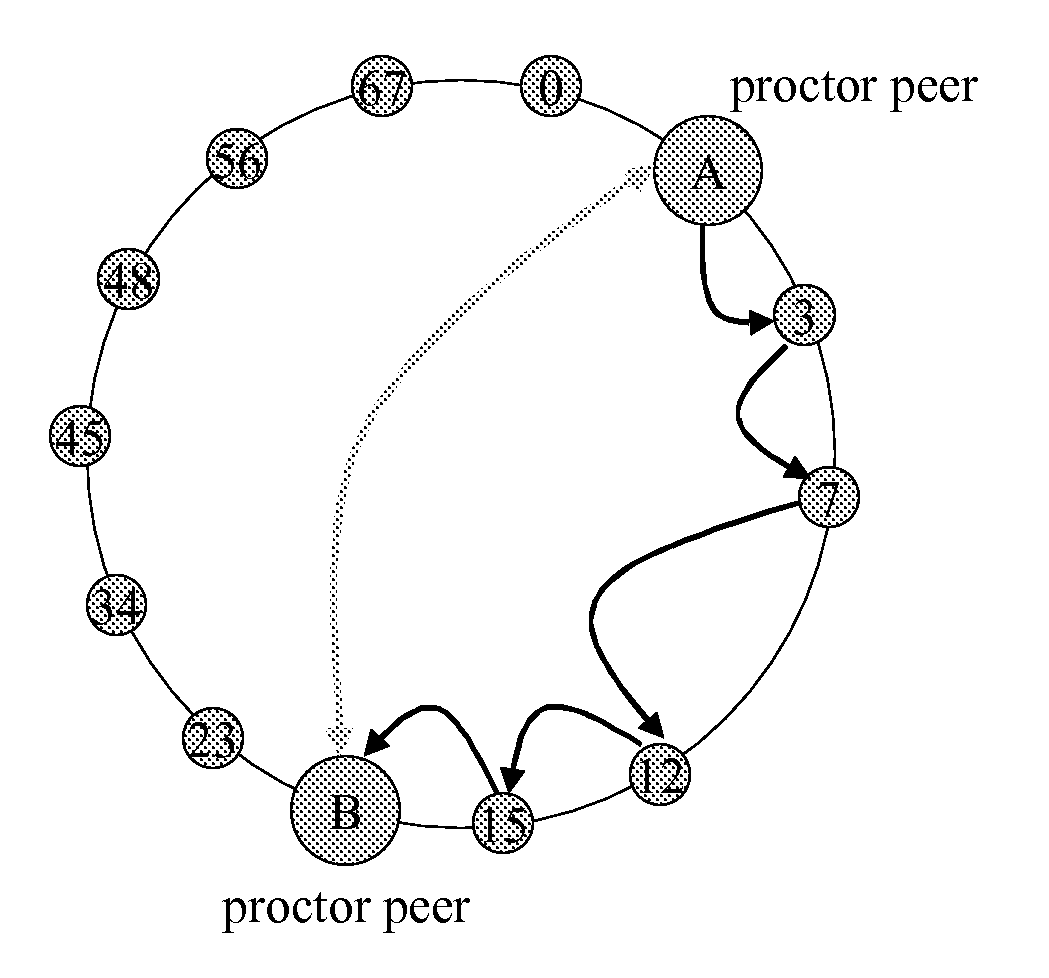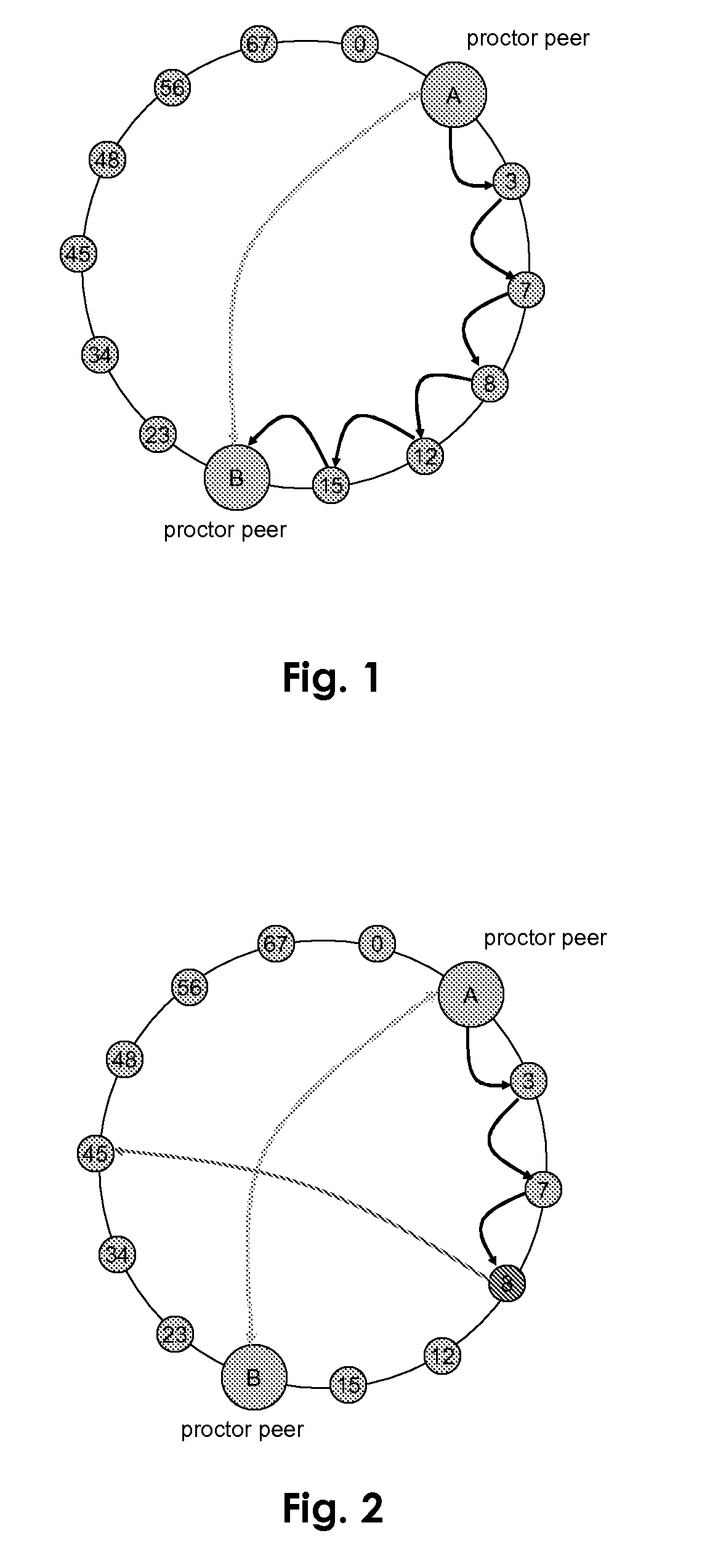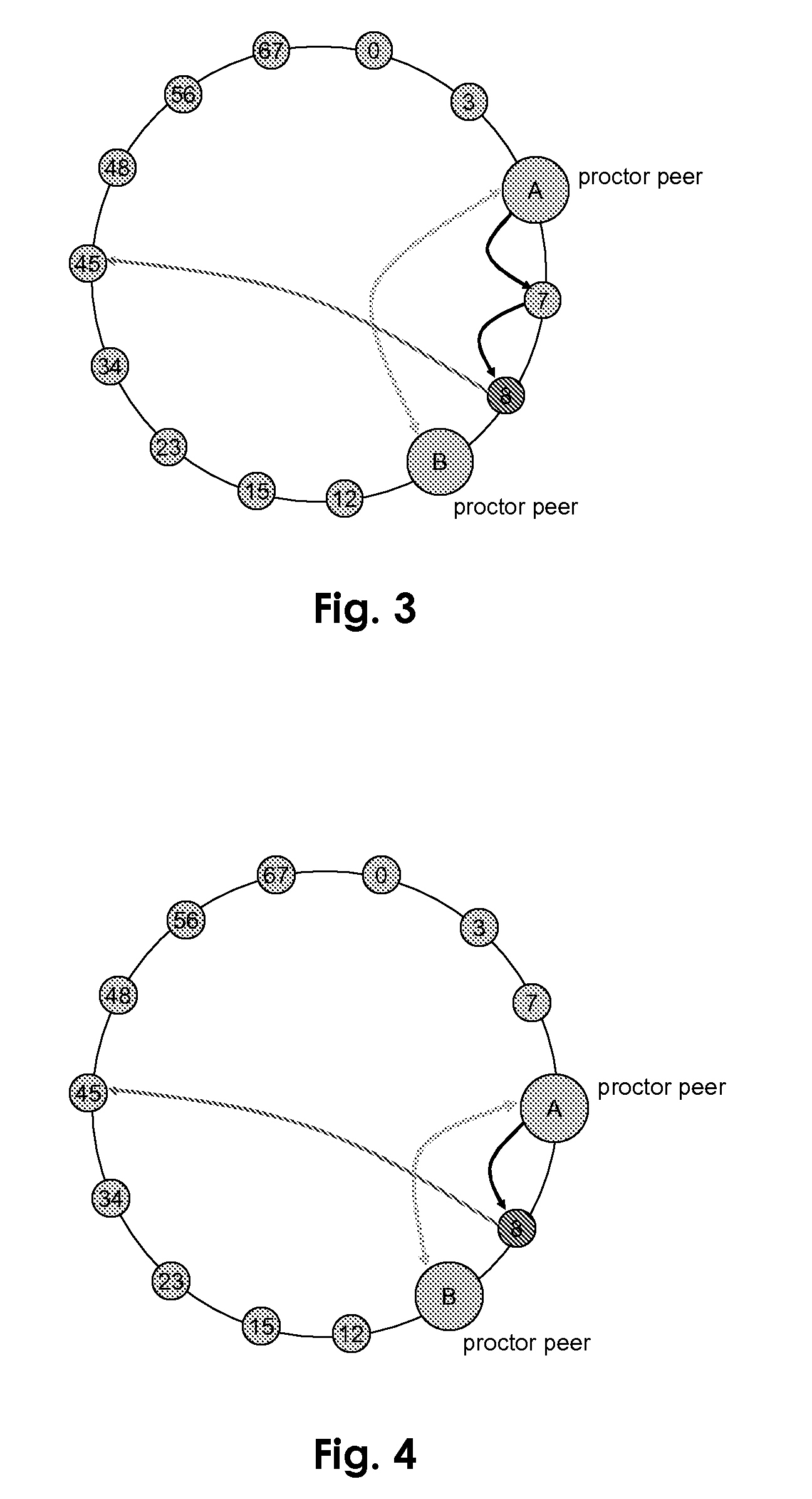Proctor peer for malicious peer detection in structured peer-to-peer networks
a peer-to-peer network and peer-to-peer technology, applied in the field of peer-to-peer malicious peer detection in structured peertopeer networks, can solve the problems of not being true in the open internet environment, unable to renew the lease, and impede the application of distributed computing systems
- Summary
- Abstract
- Description
- Claims
- Application Information
AI Technical Summary
Benefits of technology
Problems solved by technology
Method used
Image
Examples
Embodiment Construction
[0026]According to the invention a so-called proctor or tester peer is defined under the terminals of the P2P network to be analysed. The choice of the first terminal to act as a tester peer can be made randomly or applying some predefined rules. It is then such first elected tester peer which tries to determine if a structured P2P network is not behaving in a valid way when a request is forwarded to that P2P network. The tester peer checks via test messages sections of this network and validate them. In such a way, it can detect a so called malicious peer which behaviour is not adequate to the applied P2P algorithm. This means if a request is passing such a peer, the answer of this request may not be successful or / and correct.
[0027]The three following misbehaviour of a malicious node or peer can be detected when implementing a solution according the invention.[0028]Misrouting of requests: a request is not routed according to the specified algorithm for this P2P network. This distur...
PUM
 Login to View More
Login to View More Abstract
Description
Claims
Application Information
 Login to View More
Login to View More - R&D
- Intellectual Property
- Life Sciences
- Materials
- Tech Scout
- Unparalleled Data Quality
- Higher Quality Content
- 60% Fewer Hallucinations
Browse by: Latest US Patents, China's latest patents, Technical Efficacy Thesaurus, Application Domain, Technology Topic, Popular Technical Reports.
© 2025 PatSnap. All rights reserved.Legal|Privacy policy|Modern Slavery Act Transparency Statement|Sitemap|About US| Contact US: help@patsnap.com



